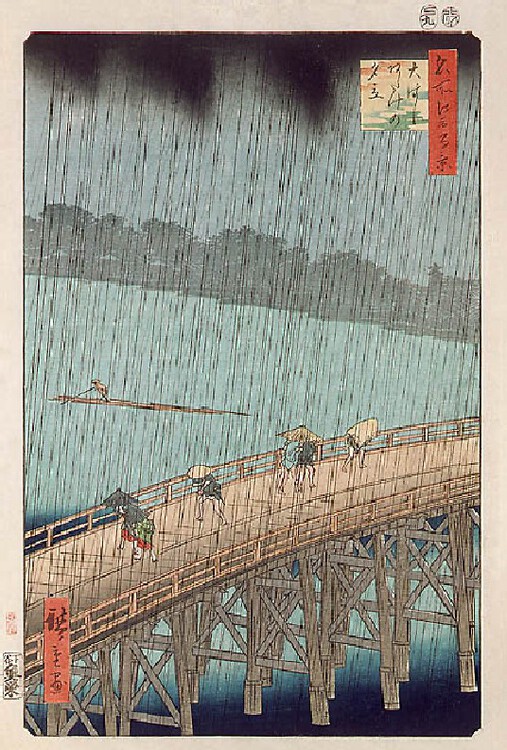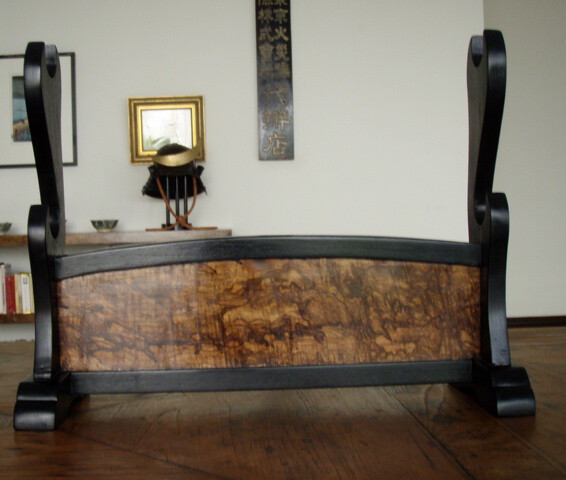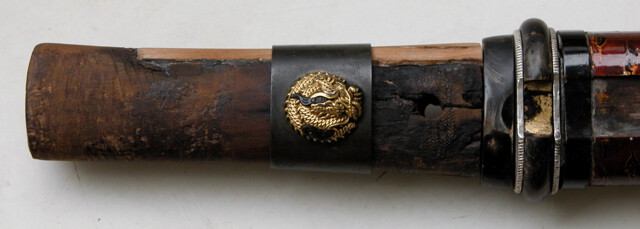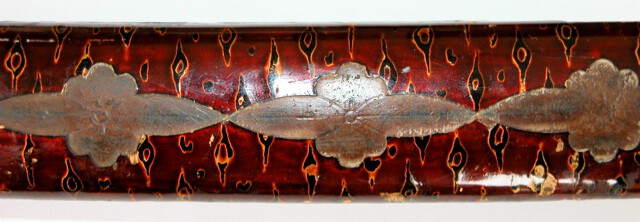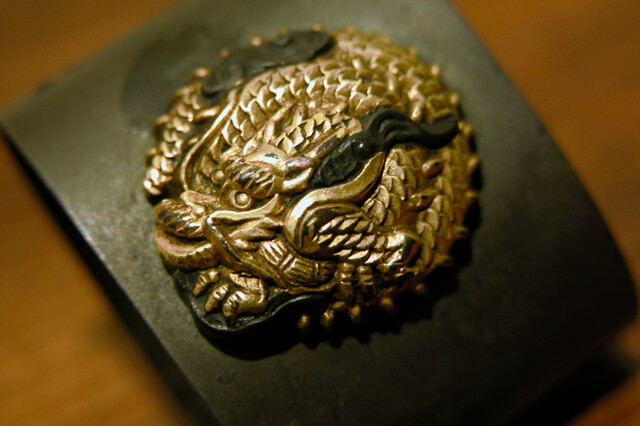-
Posts
352 -
Joined
-
Last visited
Everything posted by johnb
-
God they're sharp. while replacing a rather tight tsuka on a tanto, with of course, the blade wrapped in paper, I made a serious error. The ha was facing my palm rather than facing away from it. Slightly too much presure and hey presto. Straight through the paper and half way through my hand. Six stitches later and a renewed respect for the sharpness of nihonto!
-
Further to the woodblock. Here are three varios images of Caught in the Rain. Which is the Early Edition, which is the Restrike (Reprint) and which is the Recut? Frankly I haven't got a clue, although a close look at the background detail gives some clue. Ukiyo-e!!! Another complex Japanese hobby. I've attached the Van Gough version...probably the most valuable by far. (God knows why).
-
Cor Blimey! I'm glad the katanakake has made such an impression!! Well spotted, it is a Hiroshige. "People on a Bridge Caught in the Rain", from "One Hundred Famous Views of Edo". Unfortunately it is a reprint but I suspect quite an early one. (Not that my knowledge is up to much). I bought years ago and was told it was a late 40's reprint. PS. Glad you like the decor WoodbridgeGaijin.
-
Right now I have 5 sword stands. All different, all crap cheap ones. So I thought I'd take the oppurtunity that I'm now living in Indonesia and get half a dozen made that are all the same. I thought you might like to have a look at the prototype. It's re-cycled teak with a tiger wood panel. (Actually some type of gum).
-
I has anyone come across any good books on saya restoration or Urushi techniques? I've been trying my hand at urushi and have reasonable mastered a gloss finish...with some pain I might add. However, how to atain those amazing finishes that one sees on saya's just baffels me! John B
-
My biggest mistake (and there have been many) was at an auction. I thought I'd won a very nice Gendaito. It was at the end of the sale when I excitedly picked up my purchase that I discovered that I had been bidding on the wrong lot number!
-
Yes Martin, it is an Aikuchi Koshirae. It's taken a bit of a beating over the years. I love the lacquer finish.
-
-
I'm with you on this Jean, as for Nie deki or Nioi deki it's impossible to see in the condition it's in.
-
Hi Jean, can't really snap the hamon but the drawing is clumsy but acurate. Also the way the plus full pic of the nakago.I was thinking it might be late Muromach but soshu-den style.
-
God! My dyslexia is getting the better of me! I mean "no sign" and "Tell". :lol:
-
No sighn of a signature, and no acid from what I can teel.
-
Hi Darcy. On of the other guys here reckoned... "with a bit of imagination, and of course I could be completely wrong but I think it reads KANEMASU. It's nakago and blade shape also seem "Seki-ish" to me which would be consistent with what I think looks like late Koto work. Just a guess of course" . I've attached a pic of the mie, I'd be very interested in your opinion. John B
-
Thanks guys, much appreciated... I didn't actually think it was a chinese copy, just that the hada was so obvious. I will post pics of the mounts later today.
-
I often see choji oil refered to as clove oil...I as I understand it, choji oil is predominantly a very light mineral oil with a couple of percent clove oil, primarily to scent the mineral oil. Clove oil from the local pharmacy, I feel, is not good for swords. Clove oil may also damage any Koshirae that has been finished with contemporary lacquers. I say...BEWARE THE CLOVE OIL!
-
i pickedthis katana up when I first got into Nihonto. It is really nicely mounted, which udoubtably swayed me at the time. The blade however, is a little sad which is why I haven't really looked at it for some time. I am confused. Showa, i'm pretty sure of, but the hada almost looks like a chinese acid etched job but is clearly not the case. Any ideas what I have here? John B
-
I picked up a tanto in an Antique shop in Jakarta. (posted here a week or so ago). The hamon, ( a pretty wild gunome) is 99% identical both sides. Is this common with tanto's of or does it sugest a particular school? John B
-
Sorry, bit slow posting the images. This is a big, heavy sword. Hamon is a deep sugu which you can see where I've opened up a window. It's got some serious pitting which I didn't see in the dark shop where I bought it. It cost 300 bucks so I'm not to worried.
-
Hi Ferry, I'm based in Jakarta. If you're based here too, I'd be happy to help you determine what the sword actually. I have a very limited knowledge of Nihonto, it's a subject that gets more complex the deeper you get into it! (I should have stuck with Juke boxes, a much easier subject.) Anyway email me and perhaps I can help. John b
-
No Mike you're not missing anything, I am! A brain! :D Here we go...(Plus the page stops loading!) Finally! Anyway, 2 swords, one signed poth sides with lots unreadable...As I said any help would be most appreciated. Cheers John B
-
any help with these two would be most appreciated. John B
-
thankschaps! Ouickly rushing for my HAWLEYS and opening the page to kanemasu I find it seriously over inked and I am looking at series of plack blobs!
-
Sorry chaps. I forgot to sign...Thanks, John B
-
I read an article sometime ago by Desmon Morris about collecting. Interestingly it's predominantly men that collect. His theory is that collecting is a modern day replacement for hunting. Instead of tracking down the odd mammoth we now hunt for old cars, 1940's juke boxes and of course Japanese swords. Personally I have a preference for the "hunting down" aspect. For me, there's nothing like turning up a sword in the least expected places. And knowing that you've rescued a piece of history from a damp garage or a dusty cabinet in an antique shop in some obscure country town. Regards John B
-
It's relatively easy to do an ok job when re-warpping a tsuka, it's bloody difficult to do a great job. However, it's a bit like painting a wall...preperation is every thing. Lump and bumps under the ito will be magnified in the end result. Some menuki are much easier to bind in than others. (It's the short ones I struggle with). But the real secret is the HISHI-GAMI (THE PAPER WEDGES). Get these right and along with surface preperation and you'll definitely see it in the end result. The other secret to a great result is ... http://pages.prodigy.net/tlbuck/tsuka/tsuka.htm it's the best site I've found for Tsukamaki. Fantastic illustrations, and very clear directions. Thank you Mr Buck. Hope this helps. John B





